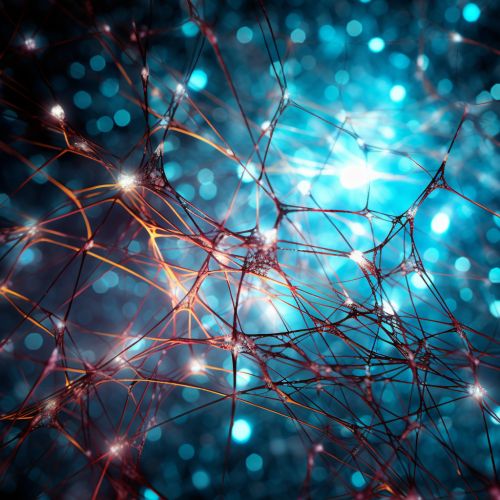Neural synchronization
Introduction
Neural synchronization, also known as neuronal synchronization, refers to the simultaneous oscillations of neuronal signals. It is a crucial aspect of information processing and transmission in the brain. Neural synchronization is involved in various cognitive functions such as perception, attention, memory, and consciousness.


Mechanisms of Neural Synchronization
Neural synchronization is achieved through the coordinated activity of neurons that fire action potentials in a synchronized manner. This synchronization can occur either through direct electrical connections (gap junctions) or through mutual chemical interactions (synaptic transmission).
Gap Junctions
Gap junctions are direct electrical connections between neurons. They allow for the rapid and synchronous transmission of electrical signals from one neuron to another. This form of synchronization is often observed in the early stages of neural development and in certain types of neural networks, such as the retina.
Synaptic Transmission
Synaptic transmission is the process by which neurons communicate with each other through the release of neurotransmitters. This form of synchronization is more complex and involves a series of events that lead to the release of neurotransmitters from the presynaptic neuron, the binding of these neurotransmitters to receptors on the postsynaptic neuron, and the generation of an electrical signal in the postsynaptic neuron.
Role in Cognitive Functions
Neural synchronization plays a key role in various cognitive functions. It is thought to facilitate the integration of information from different sensory modalities, a process known as multisensory integration. It is also involved in attention, memory, and consciousness.
Multisensory Integration
Multisensory integration is the process by which the brain combines information from different sensory modalities to form a coherent perception of the world. Neural synchronization is thought to facilitate this process by synchronizing the activity of neurons that process information from different sensory modalities.
Attention
Neural synchronization is also involved in attention. It is thought that the synchronization of neural activity can enhance the saliency of a stimulus, making it more likely to be attended to. This is supported by studies showing that the synchronization of neural activity is associated with increased attentional performance.
Memory
Neural synchronization is also involved in memory. It is thought that the synchronization of neural activity can enhance the encoding and retrieval of memories. This is supported by studies showing that the synchronization of neural activity is associated with improved memory performance.
Consciousness
Neural synchronization is also thought to be involved in consciousness. It is proposed that the synchronization of neural activity is necessary for the integration of information into a coherent conscious experience. This is supported by studies showing that the synchronization of neural activity is associated with conscious perception.
Neural Synchronization Disorders
Abnormalities in neural synchronization are associated with various neurological and psychiatric disorders. These include epilepsy, schizophrenia, autism, Alzheimer's disease, and Parkinson's disease.
Epilepsy
Epilepsy is a neurological disorder characterized by recurrent seizures. These seizures are thought to be caused by abnormal neural synchronization, where a group of neurons fire in a highly synchronized manner.
Schizophrenia
Schizophrenia is a psychiatric disorder characterized by hallucinations, delusions, and cognitive deficits. Abnormalities in neural synchronization have been observed in individuals with schizophrenia, and it is thought that these abnormalities may contribute to the cognitive deficits observed in this disorder.
Autism
Autism is a developmental disorder characterized by difficulties in social interaction and communication. Abnormalities in neural synchronization have been observed in individuals with autism, and it is thought that these abnormalities may contribute to the social and communication difficulties observed in this disorder.
Alzheimer's Disease
Alzheimer's disease is a neurodegenerative disorder characterized by memory loss and cognitive decline. Abnormalities in neural synchronization have been observed in individuals with Alzheimer's disease, and it is thought that these abnormalities may contribute to the memory loss and cognitive decline observed in this disorder.
Parkinson's Disease
Parkinson's disease is a neurodegenerative disorder characterized by motor symptoms such as tremors, rigidity, and bradykinesia. Abnormalities in neural synchronization have been observed in individuals with Parkinson's disease, and it is thought that these abnormalities may contribute to the motor symptoms observed in this disorder.
